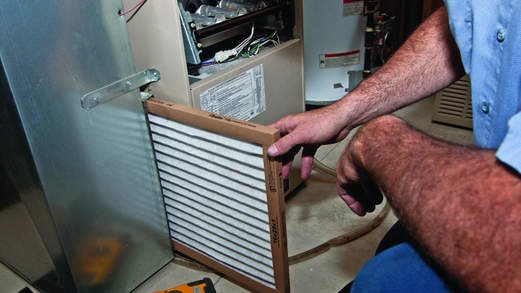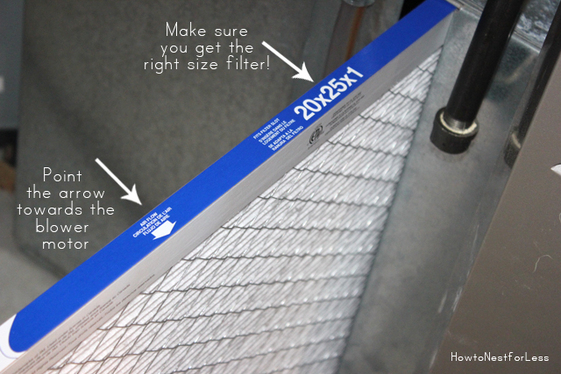Furnace Filters
Sep. 21, 2016
Primarily, furnaces have to be maintained and cleaned by a professional on an annual basis, but there is one form of maintenance that all homeowners will want to keep up themselves, and that is changing the air filter. The filter is usually located on the side of the furnace near the floor where the return air duct connects. The filter will either be reusable or disposable - usually disposable; if it is reusable, you would be cleaning rather than replacing it.
Furnace filters are commonly good for 90 days of regular use, but should be checked monthly during the heating season (all year if you use A/C). As soon as you can start to see dust accumulating on the filter surface, it needs to be replaced.
A common misconception is that regular furnace filters are designed to improve indoor air quality. In reality, they normally do not exceed a MERV (Minimum Efficiency Reporting Value) of 1 to 4 - MERV 20 being close to 100% efficient. Typical furnace filters are only designed to capture large, slow-moving particles, but not the very small particles (which have the most effect on your health).
The real purpose of these filters is to protect the furnace itself, specifically the blower fan and motor. If dust is allowed to build up in these components it can cause premature failure - that is why you want a filter in place. The reason to change your filter is because when dust builds up on the filter surface, it becomes more efficient, and allows less and less air to pass through - this is called "pressure drop". When excessive pressure drop occurs, the heat exchanger inside the furnace can overheat because not enough air is passing over it to absorb an adequate amount of heat from it.
Every time the heat exchanger overheats, its metal walls fatigue a little more. This makes them susceptible to cracking, and once the heat exchanger cracks, it cannot be repaired and the whole furnace needs to be replaced. Not only is this a financial issue, but a massive safety issue as well because every time a furnace with a cracked heat exchanger turns on, it will be spilling CO (Carbon Monoxide - a lethal gas) into the house air. You cannot smell CO, which is why every house with a fuel-burning appliance (gas, oil or wood) needs to have at least one smoke detector and one CO detector on every floor.
TIP: When replacing a filter, make sure the arrow on the top edge is pointing toward the furnace. If you find that it has been installed wrong, throw it away and replace it - do not turn it around and re-insert it. Also note the size of the filter to make sure you purchase the right one.

Written by:
DONOVAN ILLIG
Home Inspector & Residential Environmentalist
Premium Home Inspections Ltd.
250-617-3378 | donovan@premiumhi.net
CPBC License #71217



